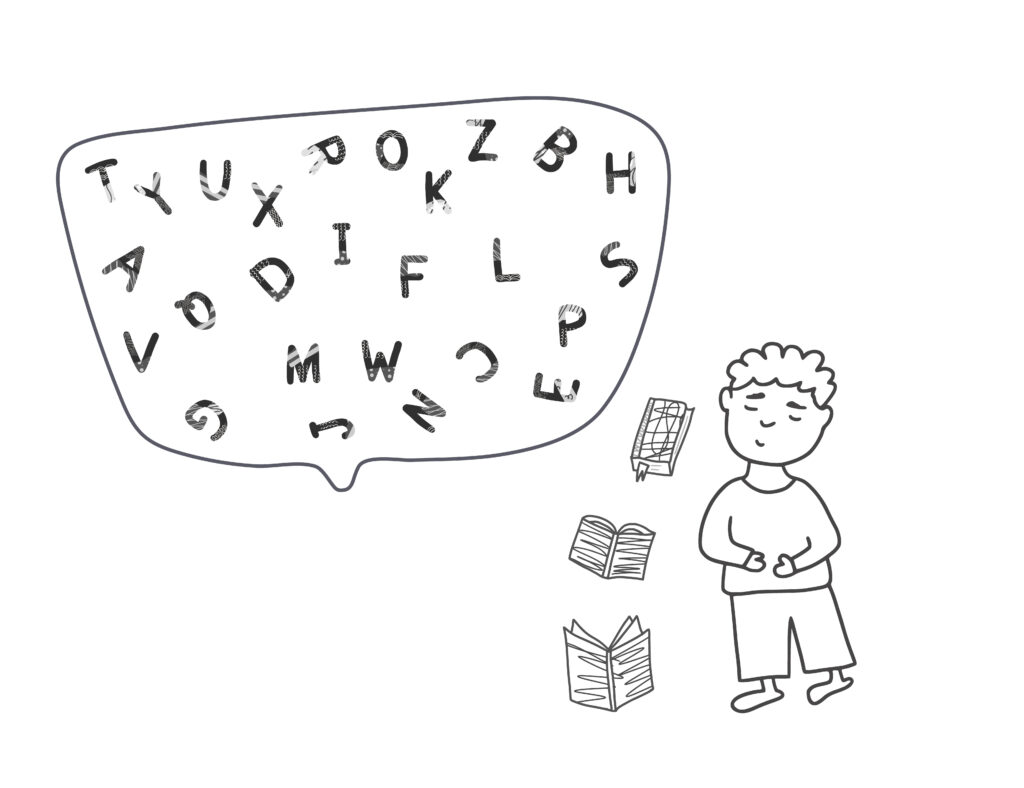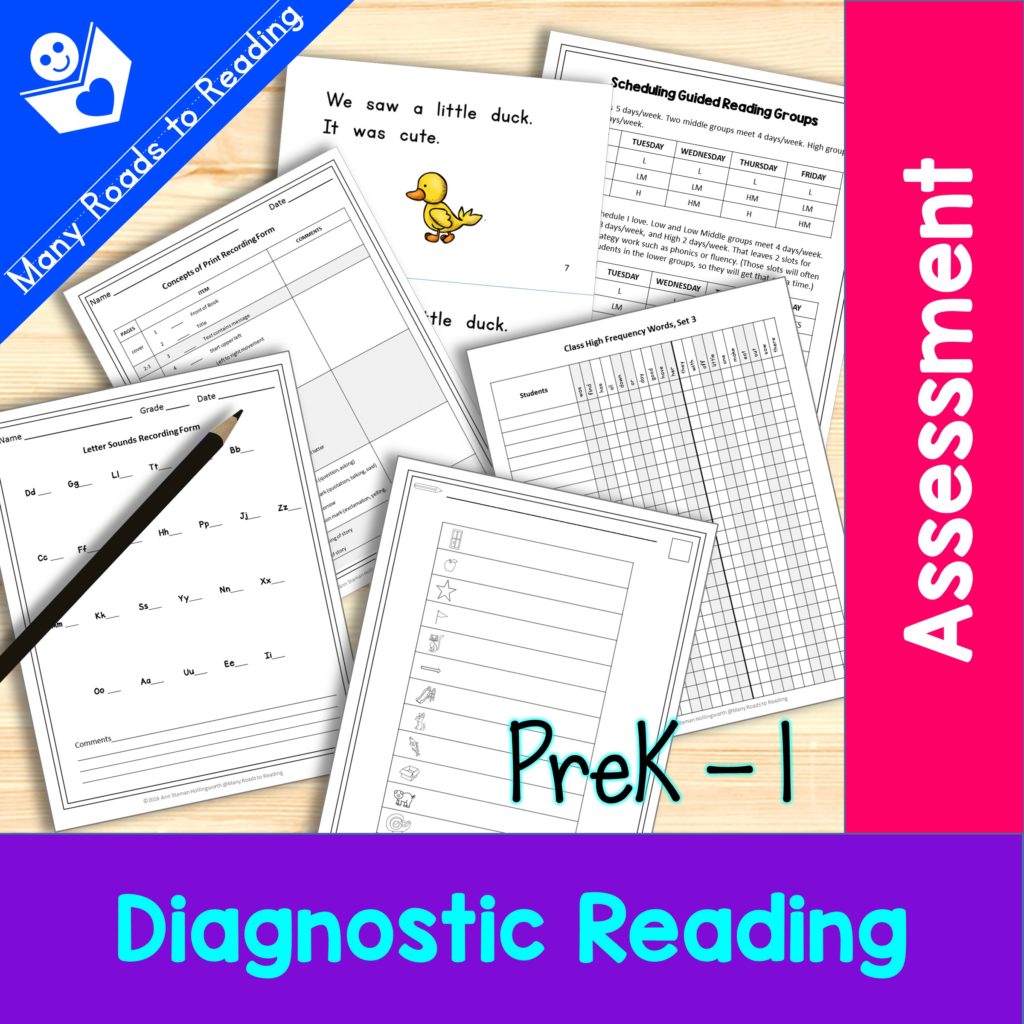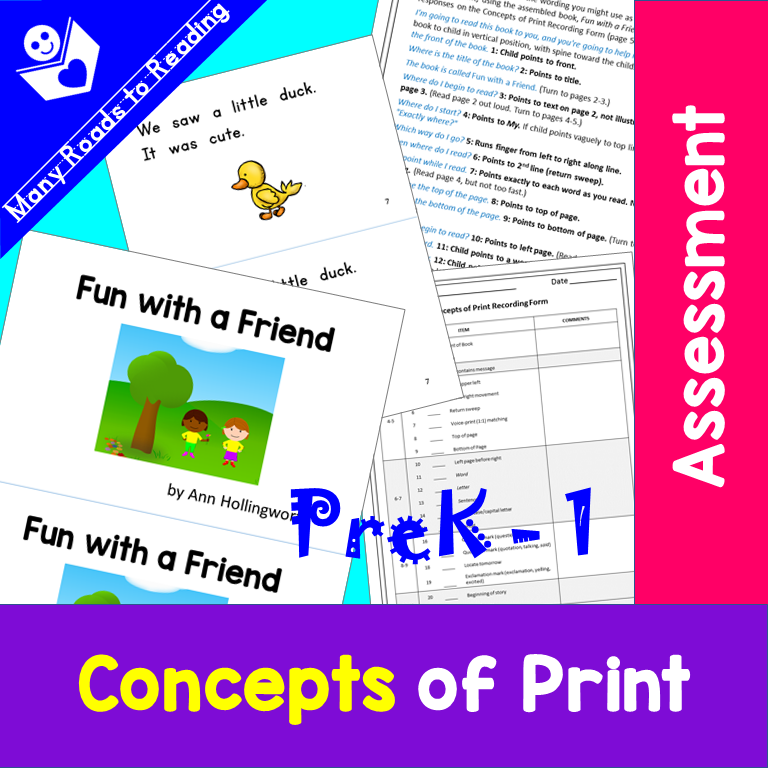
Want to start the school year off in the best way you can for your kindergarten or first grade reading students? The magic word is ASSESSMENT!
Conducting proper assessments early on saves time and allows you to teach what your students need, rather than waste time going over what they already know. Whole group assessments, in particular, are quick and easy to administer, as opposed to one-on-one evaluations, where you have to find something for the rest of the group to do while you administer them.
I’m going to show you four informal whole group assessments that you can create yourself, and you won’t have to spend a single penny! These tests will give you a wealth of information about what your students know about writing, and by inference, about reading.
- Letters They Can Write
- Words They Can Write
- Simple Spelling Test
- Simple Dictation
Preparation
Cover up all the letters and words in the classroom, or wait to decorate your bulletin boards and place nametags on the desks until after you have administered these tests. Alternatively, have your students take these assessments on clipboards, in the gym.
For all the assessments, you will give the children blank pieces of paper to write on. Some teachers like to have the kids use markers, so that erasing doesn’t waste time. If children want to make a correction, tell them to cross out the mistake with one line and write the correction next to it.
And don’t forget privacy shields!
Letters They Can Write
This is a quick test. Tell the students to write all the letters they know. Some will want to recite the alphabet, but be sure they don’t say it out loud. Others may start by writing the letters in their name or the names of other family members. A few students may write only one or two letters.
To “grade” the test, simply count all the letters the child formed correctly. Decide whether to count reversals as errors. At the very least, make a diagnostic note about them.
Words They Can Write
To me, this is the most effective way to evaluate youngsters’ early literacy skills. Give the children 10 minutes to write all the words they know. As with the letters, some kids may only be able to write a couple of words, while others will be writing the whole time.
Afterwards, count all the words each child was able to write correctly. It’s also interesting to note how certain students organized their word writing. Noting, for example, that a student organized their word list phonetically tells you a lot about that student. Another child might organize the words they write by theme (all family members, animals, and so forth).
Simple Spelling Test
It’s up to you what type of words you want to include on the spelling test. You may want to choose words that exemplify the phonetic elements you are going to introduce during the year, but if you do this, try to pick words that the children will not have seen in their environment (e.g., jam, not cat). You can also include a few high frequency words, if you wish.
Simple Dictation
Another instructive whole group assessment is a simple dictation. Make up some simple sentences appropriate for your grade level. Include both high and low frequency words, and think about the phonetic elements you will be teaching. Here are some sample sentences:
- The hat is red.
- I see a big van.
- Bob is in the tub.
When you give the dictation, don’t remind the kids about uppercase letters and punctuation. See what they can do on their own.
That’s all there is to it!
It won’t take you long to create these assessments. To speed up the process, work together with your colleagues to decide how to test. And don’t worry if you decide to change the assessments later. Think of the process as a learning experience–for you, as well as for the students!
The results of these quick and easy written assessments will provide you with valuable information about your students that you might have to wait weeks to discover, otherwise. This isn’t “teaching to the test;” it’s teaching from the test!






Leave a Reply